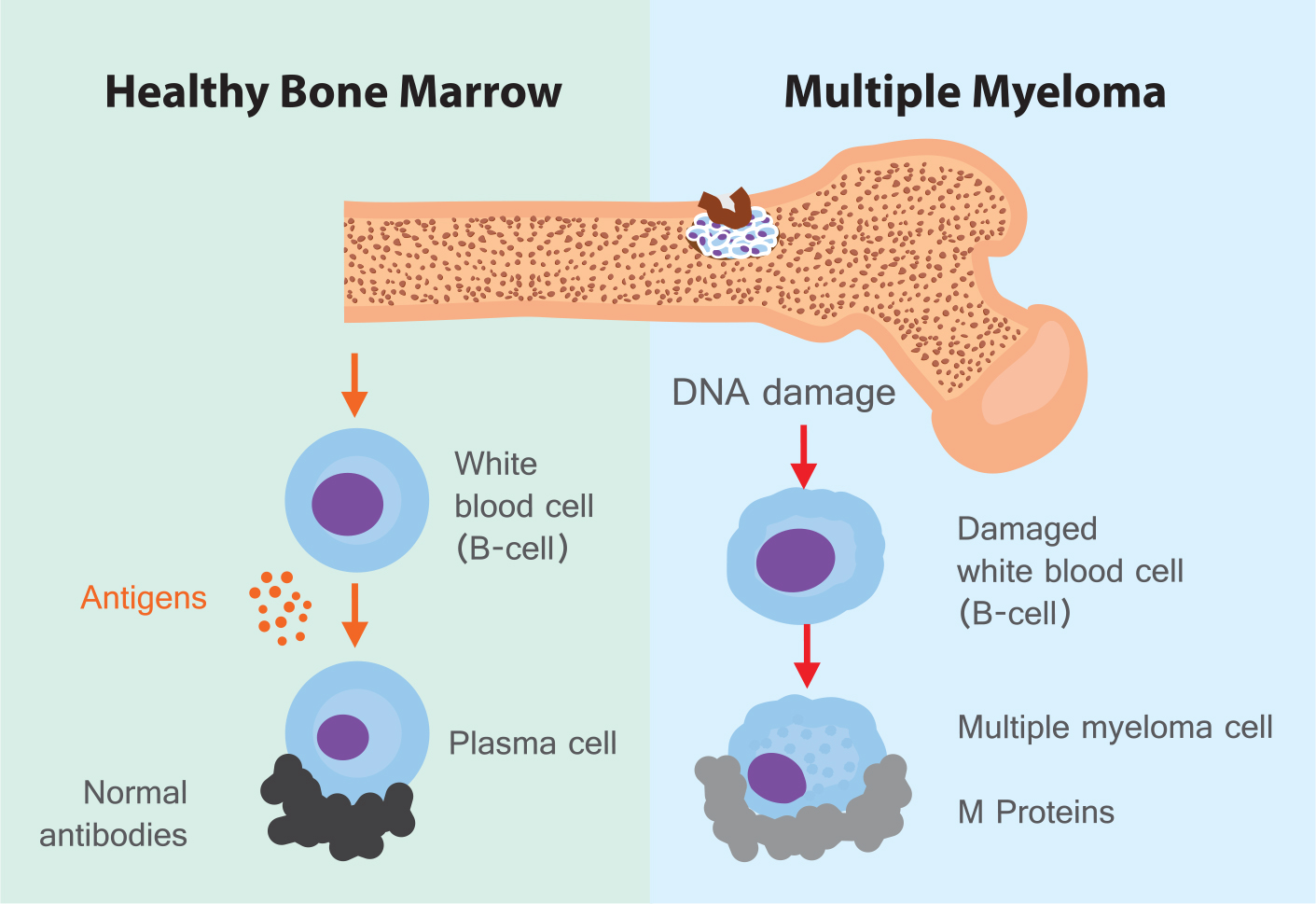“There is no doubt in my mind we significantly improved the quality of care for our
multiple myeloma patients by participating in this quality initiative with the Association
of Community Cancer Centers (ACCC),” said Dr. Arati Patel, who is the medical director
of quality and outreach for oncology services at CalvertHealth.
Multiple myeloma is the second
most common hematologic
malignancy (cancer of the blood),
after non-Hodgkin lymphoma. It is
more common in men than women
and occurs more frequently after
age 70. The disease can damage
and weaken the bones, immune
system and kidneys.
According to Dr. Patel,
CalvertHealth was selected to
participate in the six-month
collaborative effort with the ACCC
along with two other hospitals
nationwide. The program brought
together CalvertHealth’s multidisciplinary
oncology team with visiting experts from top
cancer centers across the country to explore
barriers and solutions to optimal care for
patients diagnosed and treated for multiple
myeloma.
“The opportunity to work with the
ACCC and to bring all their resources to
bear on our improvement project was really
exceptional,” said Kasia Sweeney, who
oversees oncology services at CalvertHealth
Medical Center (CHMC).
Commitment to Quality Underscored
“We have a whole team (our cancer
committee) who is constantly reviewing
data and evaluating how we care for
patients looking for opportunities to make
improvements,” added Sweeney.
“Every year, our cancer committee selects
one or two quality projects to focus on,” she
said. “The physicians make suggestions
about potential areas of focus based on their
own knowledge of the patient population or
different challenges they’ve identified within
their practice.”
Sweeney went on to add, “For instance,
last year we did a lymphedema project that
looked at our patient experience to determine
what we could do in terms of enhancing
education to provide the best possible
outcome.
“Now, all new breast cancer patients
are referred to physical therapy for a
pre-op evaluation,” she said, “and then
followed post-op with measurements to make
sure we catch any lymphedema early.
“The prior year we did a thoracic study
that was highlighted as best practice by the
American College of Surgeons Commission on
Cancer,” said Sweeney. “This study resulted in us making changes to our biopsy
process in order to expedite diagnosis and
treatment.”
Dr. Patel also emphasized the effort
devoted to ensuring the highest quality
cancer care at CalvertHealth Medical
Center. “I feel like there is a great
partnership between administration and
the medical leadership at CalvertHealth,”
she said. “I take tremendous pride and
responsibility in being charged with
the quality initiatives for our oncology
program.”
Dr. Patel said this “culture of quality”
is the foundation of the patient-centered
approach to care at CalvertHealth. “At
all times, we want to make sure we’re
following the latest evidence-based
guidelines, enhancing patient safety,
minimizing complications and maximizing
value in the health care we deliver.”

Survival Rates Improving
“This quality study was especially
important because of the increasing
number of multiple myeloma patients who
are living longer with newer treatment
regimens,” said Dr. Bilal Ahmed, who is
board certified in medical oncology and
hematology. “It has become one of the
more common cancers I treat actually.”
He explained, “Even though the
incidence of multiple myeloma is low, the
prevalence is high now. Nearly all of the
multiple myeloma patients I have seen in
the last 10 years are living with what we
now call a chronic condition.
“Almost every year, we’re seeing
three to four new treatments for multiple
myeloma,” said Dr. Ahmed. “Particularly
exciting is the research into CAR T cell
therapy, which trains your immune system
to find and kill cancer.”
He went on to add, “I am very proud of
our (oncology) team for incorporating the
most cutting-edge treatments as soon as
they gain approval.”
Communication and Collaboration Key
According to Dr. Patel, one of the
challenges with multiple myeloma patients
is effectively addressing the side effects of
the bone-modifying agents (BMAs),
which are administered to treat the
bone-related effects caused by the
disease. A chief concern being teeth
and jaw problems.
“Unfortunately, dental health for
this vulnerable population is a huge
issue in Southern Maryland,” said
Dr. Patel. “Many do not have dental
insurance and there is a shortage of
dental providers.”
Dr. Patel said the data collected
from the study demonstrates CHMC
made a meaningful impact in the
quality of care for multiple myeloma
patients. “We increased the use
of evidence-based bone-modifying
agents; we did a better job of
screening these patients for dental
risk; we monitored them better and
the patients were more engaged.”
She said enhanced
communication and collaboration
were key factors in the project’s
success. “We had multiple meetings
among the members of the oncology
team to make sure we were all on
the same page. Additionally, we created
multiple tools to make sure these
things were happening.”
Infusion center nurse Jennifer
Dixon, RN, BSN, agreed with this
perspective. “Establishing dental
folders and dental screening tools in
each myeloma patient’s electronic
health record enabled the staff to better
assess each patient’s dental health and
those at risk for bone-modifying agent
complications.”
Dixon went on to add, “The
improved order set for bone-modifying
agents also helped improve patient
safety.”
Dr. Patel recognized the support
received from the ACCC during the
quality study. “We had constant
interaction and support from them. They
gave us lots of guidance and feedback. It
was a nice collaboration for us.”
She went on to add, “Doing these
quality studies enables us to bring
the most recent, most innovative and
cutting-edge strategies